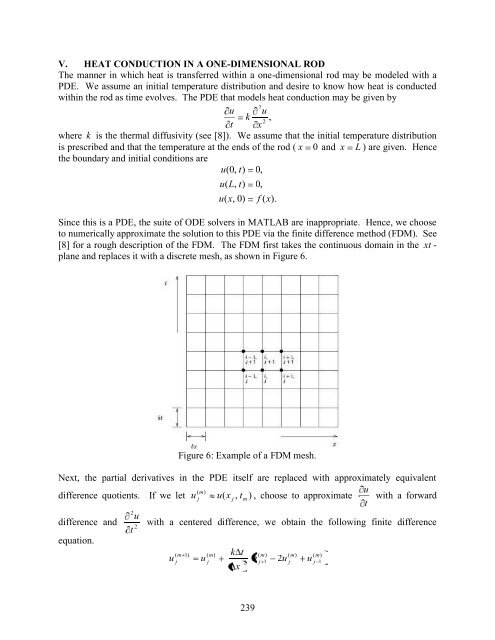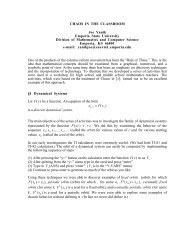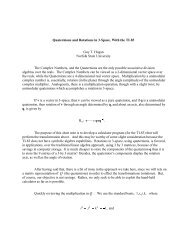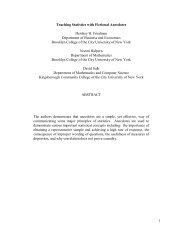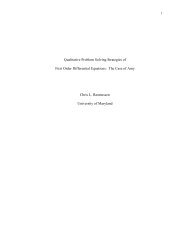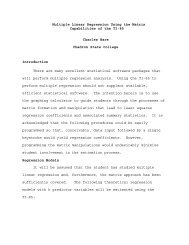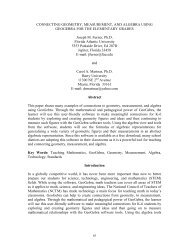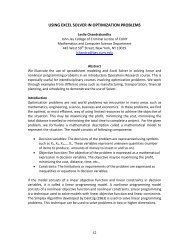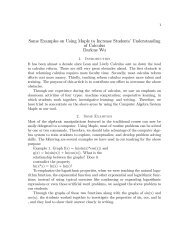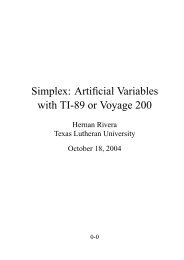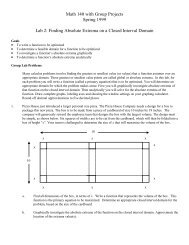Projects with applications of differential equations - Mathematics ...
Projects with applications of differential equations - Mathematics ...
Projects with applications of differential equations - Mathematics ...
Create successful ePaper yourself
Turn your PDF publications into a flip-book with our unique Google optimized e-Paper software.
V. HEAT CONDUCTION IN A ONE-DIMENSIONAL ROD<br />
The manner in which heat is transferred <strong>with</strong>in a one-dimensional rod may be modeled <strong>with</strong> a<br />
PDE. We assume an initial temperature distribution and desire to know how heat is conducted<br />
<strong>with</strong>in the rod as time evolves. The PDE that models heat conduction may be given by<br />
u<br />
t<br />
k<br />
2<br />
u<br />
, 2<br />
x<br />
where k is the thermal diffusivity (see [8]). We assume that the initial temperature distribution<br />
is prescribed and that the temperature at the ends <strong>of</strong> the rod ( x 0 and x L ) are given. Hence<br />
the boundary and initial conditions are<br />
u(<br />
0,<br />
t)<br />
u(<br />
L,<br />
t)<br />
u(<br />
x,<br />
0)<br />
0 0,<br />
0 0,<br />
f ( x).<br />
Since this is a PDE, the suite <strong>of</strong> ODE solvers in MATLAB are inappropriate. Hence, we choose<br />
to numerically approximate the solution to this PDE via the finite difference method (FDM). See<br />
[8] for a rough description <strong>of</strong> the FDM. The FDM first takes the continuous domain in the xt -<br />
plane and replaces it <strong>with</strong> a discrete mesh, as shown in Figure 6.<br />
Figure 6: Example <strong>of</strong> a FDM mesh.<br />
Next, the partial derivatives in the PDE itself are replaced <strong>with</strong> approximately equivalent<br />
( m)<br />
difference quotients. If we let u j u ( x j , tm<br />
) , choose to approximate<br />
u <strong>with</strong> a forward<br />
t<br />
difference and<br />
equation.<br />
2<br />
u<br />
<strong>with</strong> a centered difference, we obtain the following finite difference<br />
2<br />
t<br />
( m<br />
u j<br />
1<br />
)<br />
( m)<br />
u<br />
j<br />
k<br />
t<br />
2<br />
x<br />
( m)<br />
)<br />
u j 1<br />
( m)<br />
2 2u<br />
j<br />
( m )<br />
u j 1<br />
239


